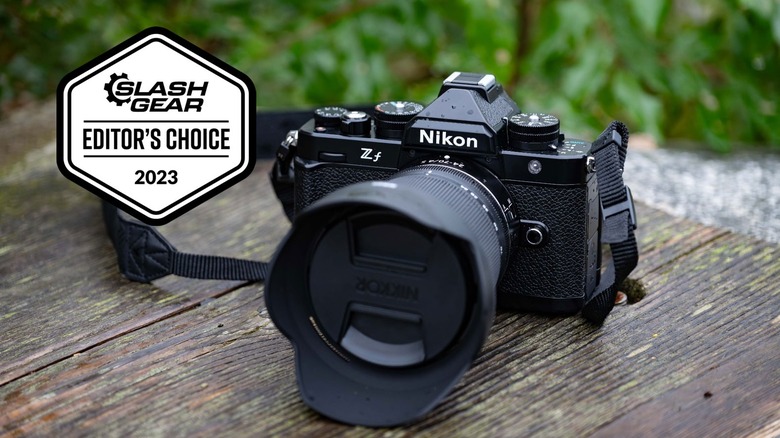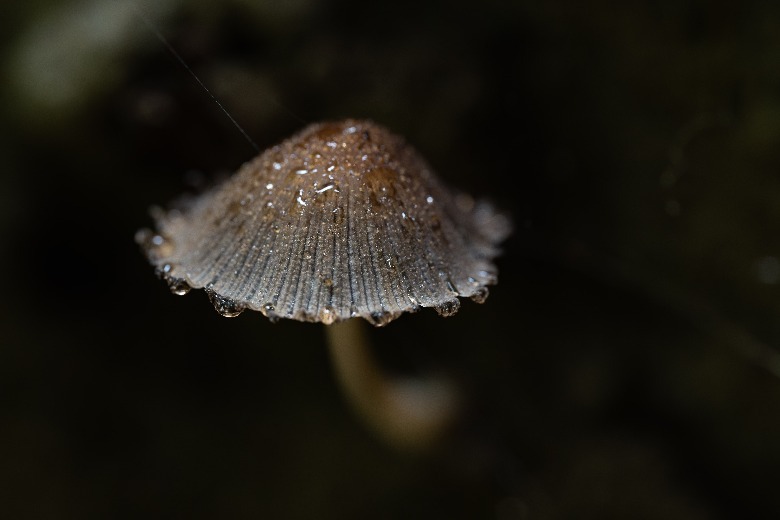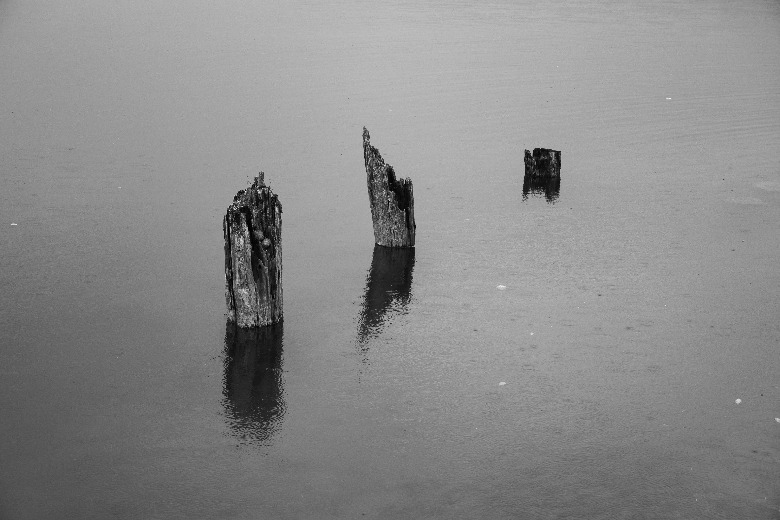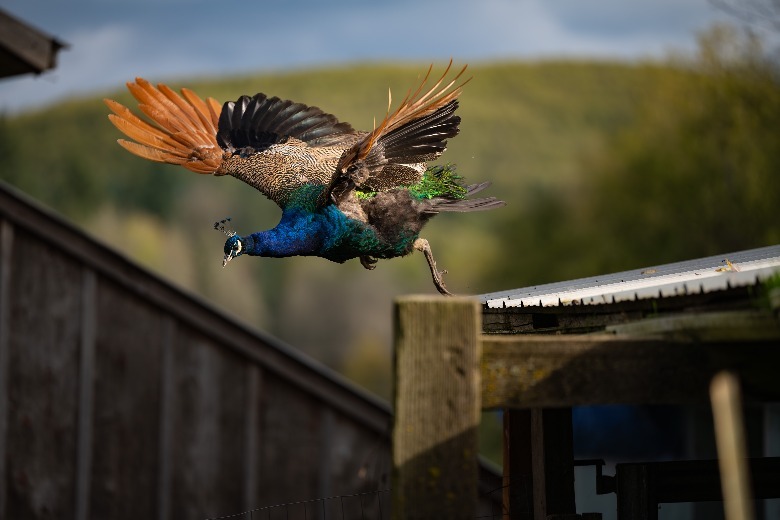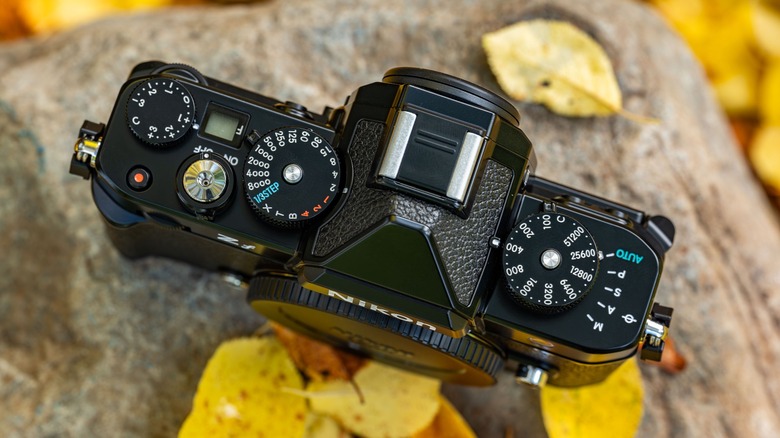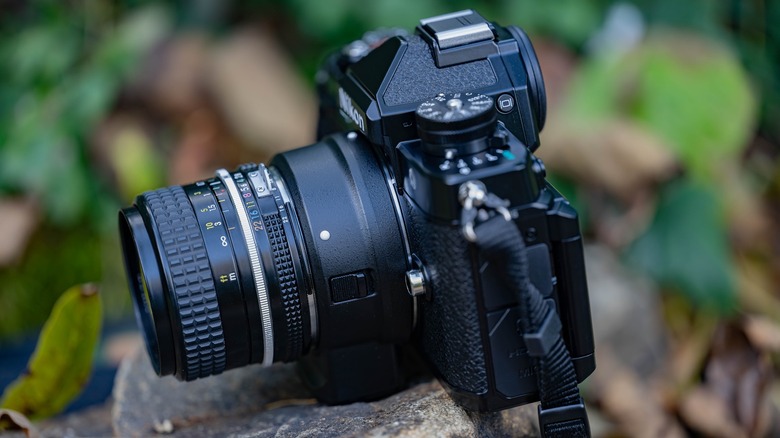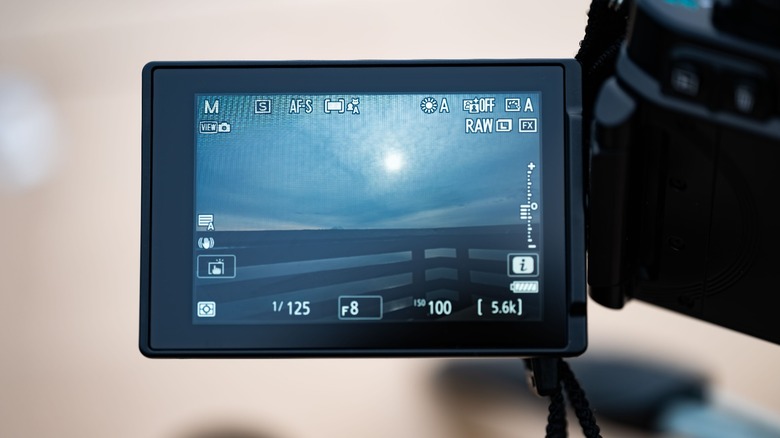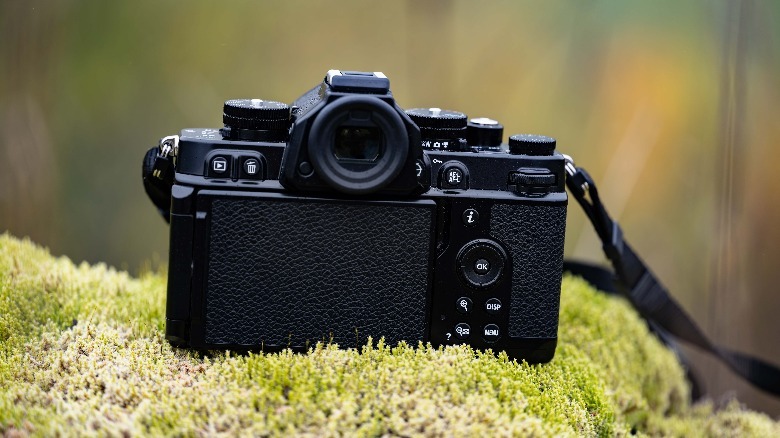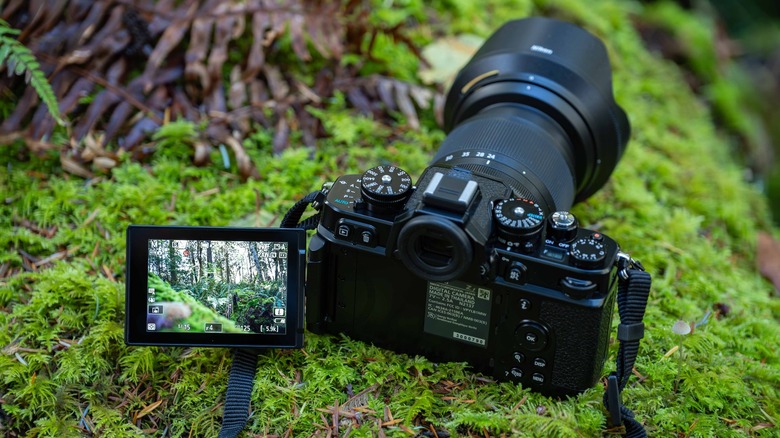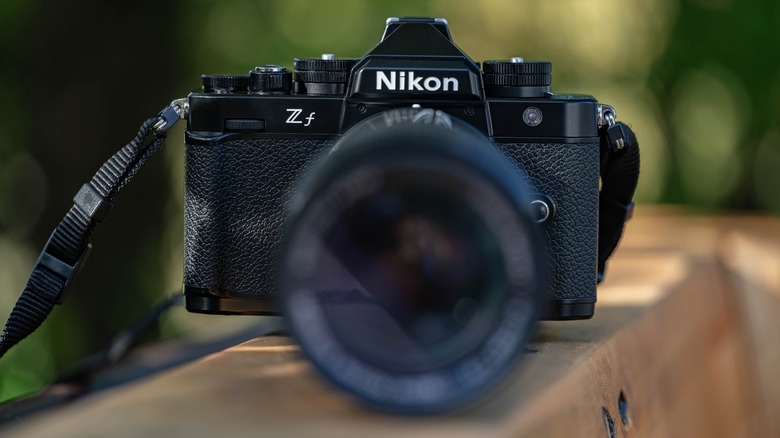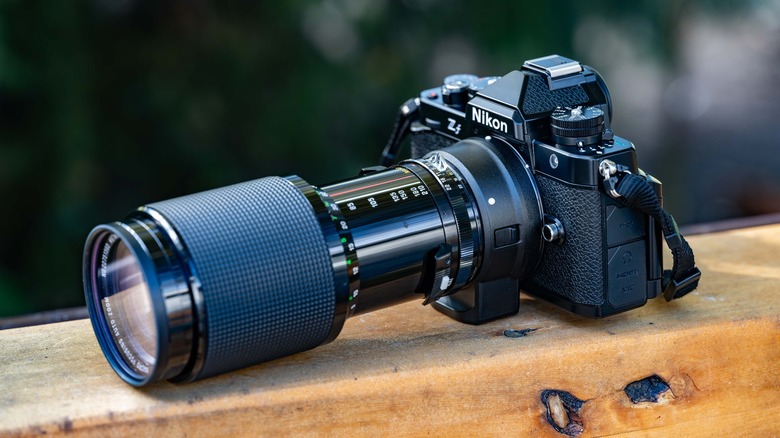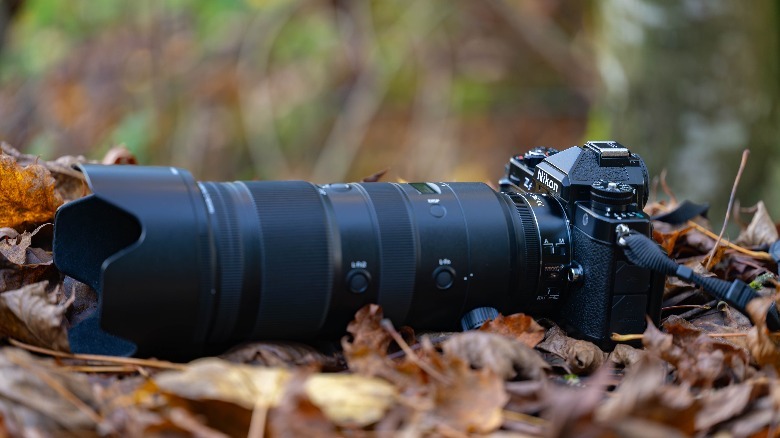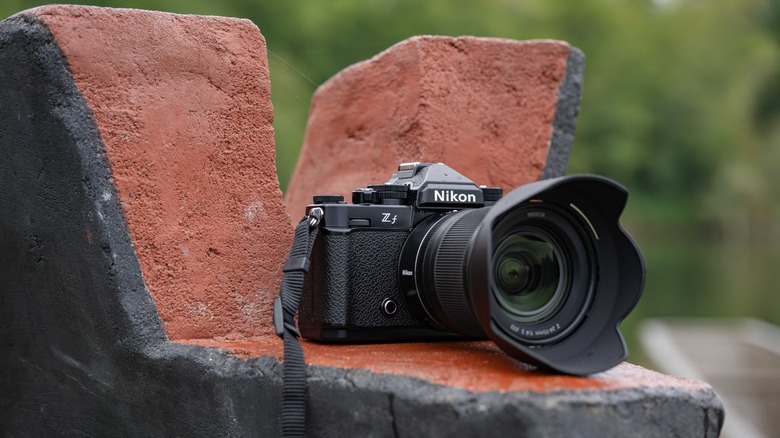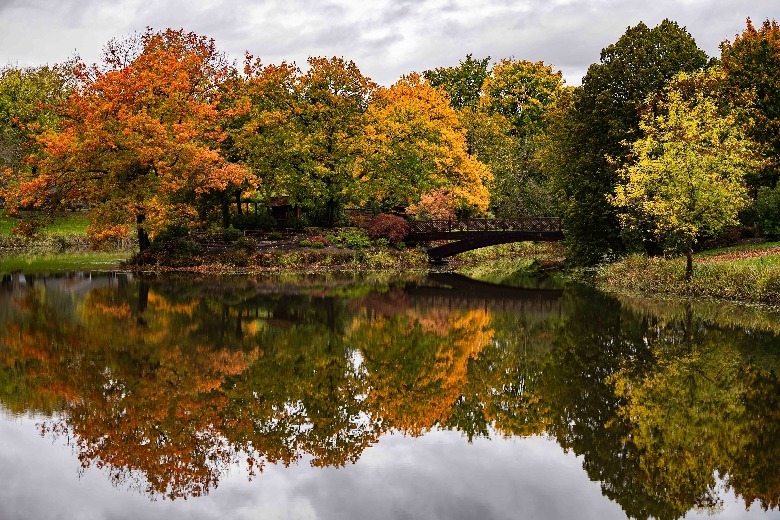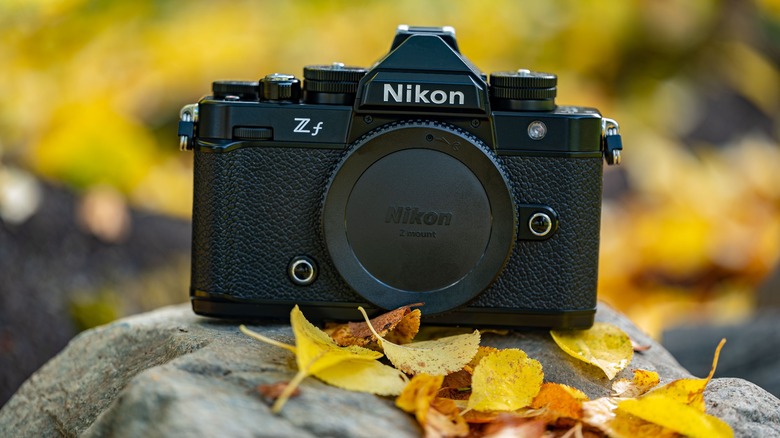Nikon Zf Review: A Cutting Edge Camera Hides Beneath A Vintage Exterior
- Beautiful retro design
- Wide range of available colors
- Physical controls for most camera functions
- Full frame sensor delivers excellent image quality
- Fully articulating display
- Lightweight and portable
- Ideal for use with adapted film camera lenses
- Fast autofocus and continuous shooting rates
- Excellent low light performance
- Good value for money
- Shallow grip
- Port covers aren’t very robust
- Mushy buttons
You'd be forgiven for mistaking the Nikon Zf for one of Nikon's classic film cameras, but the truth is that behind its vintage-styled exterior are the guts of a modern digital camera. The Zf is the full frame brother to the excellent crop-sensor Nikon Z Fc, both cameras certainly owing part of their heritage to the venerable Nikon Df DSLR of years past. The Zf is seemingly the pinnacle of Nikon's efforts to marry the aesthetics and tactility of film cameras with the performance and convenience of digital.
As great as the Zf looks in promotional images, and as enticing as its spec sheet may be, it's necessary to go hands-on to see if that translates to the rewarding photographic experience it appears to offer. We must discover if it feels as good as it looks, and if the images it produces are as polished as its precisely machined dials and switches.
Nikon provided a ZF camera for the purposes of this review.
Full frame image quality
Like an old-school Nikon film camera would have captured images on 35mm film, the Nikon Zf captures images using a 35mm sensor. That full-frame 24.5MP sensor isn't hugely high resolution by today's standards, but it delivers more than enough pixels for most people. The more modest 24.5MP resolution sensor helps the Zf excel in terms of low light performance, as it features an ISO range of 100-64,000 for stills (it only goes up to 51,200 for video). It keeps noise suppressed really well, even towards the upper end of that range.
If you need more resolution, the Zf features a 96MP ultra-high resolution still photo mode, which shifts the sensor around by slight increments to capture 32 images. These must then be combined later on your computer in Nikon's NX Studio software.
The Zf delivers absolutely gorgeous color rendering, but thanks to a dedicated black-and-white mode it also is great for those who enjoy shooting in monochrome. Of course, if you shoot in RAW format rather than JPEG or HEIF, then you can always change your mind and switch back to color after the fact.
Dynamic range is excellent in the Zf, so we were easily able to rescue highlights and shadows when editing in Lightroom. Overall there are zero complaints to be made regarding image quality.
Retro design offers both form and function
The Nikon Zf is a work of art — there's really no other word for it. This is a beautiful camera, and it feels just as satisfying to operate as you'd hope. The dials are made of brass and have an immensely tactile click as you turn them. Having shutter speed and ISO, as well as exposure compensation, physically represented means you don't have to peer at a screen to dial in your settings, and even the shutter button is a delicious metal knob. Aperture is shown in a little LCD window on top. There are two other multi-function dials, as well as a customizable button on the front of the camera.
The grip is rather shallow, which aids in making this a particularly slim and compact camera, and it's actually not bad ergonomically, but it's also definitely far less comfortable than other Nikon cameras. However, there is a grip extender available to remedy this issue.
The textured grip material covering most of the body is stiff and feels far more durable than that on other Nikon cameras. The body underneath is made of magnesium and carbon fiber and is very well weather-sealed. We felt confident using it in light rain. The Zf also comes in a range of colors, from the traditional black to blue, green, and red, among other attractive hues.
Ports, media, and app
In terms of ports, you get USB-C for data and charging, as well as separate microphone and headphone jacks, plus a mini-HDMI port. This is a reasonable selection and is all that most people will ever need. The camera takes an SD card, which we actually appreciate as it's more affordable and easier to find than more cutting-edge storage.
Unfortunately, the side port covers are made of soft plastic that does not feel durable at all, and we worry that they will wear out quite quickly. We've experienced this issue with similar material in the past on the Nikon Z6 and Nikon Z9, where it has a tendency to warp out of shape. The Zf port covers aren't identical to the Z6 and Z9 in design however, so time will tell, but we expect them to need to be replaced in a year or two.
Our one other build quality complaint is that the directional pad and surrounding buttons on the rear of the camera are a bit mushy. They aren't bad by any means, but they aren't of the same extremely high caliber as the rest of the camera. Overall, however, the Zf is stunningly well-made.
Nikon's Snapbridge app is a great way of updating the camera, downloading photos, and remotely controlling the Zf. It's a functional and straightforward piece of software.
Fully articulating display and a big, bright viewfinder
Whereas most of Nikon's full-frame mirrorless cameras feature screens that merely tilt, the Nikon Zf includes a fully articulating touchscreen display which offers a number of significant advantages. There's the obvious upside for video creators who need to monitor themselves, as the screen can be swiveled to face in the same direction as the camera, and it's ideal for getting shots from a wider variety of angles.
It's also great from an aesthetic perspective, as when it's turned screen-side in, the back of the display is textured to match the film camera look that the Zf is going for. Also, if you want to use the Zf more like a film camera, without the need to look at the screen, then this helps you do that and eliminate distractions.
The screen itself is bright, with high resolution, and reproduces color accuracy. It's very solidly built so we were never worried about its durability, and by folding it screen-side-in you can reduce the chance of your display becoming damaged.
Surprisingly competent for video
Given the obvious inspiration taken from classic film cameras, you might not assume that the Nikon ZF is particularly great for shooting video. However, while it doesn't have much in the way of advanced video features, it nonetheless is capable of capturing the high-quality footage we've come to expect from Nikon cameras. The Zf is also great for capturing timelapse videos,
In terms of frame rates, you can capture 4K footage at up to 30fps using the full width of the sensor, or up to 60fps with the sensor cropped. You can even get some good slow-motion footage if you drop down to 1080p where 120fps becomes available. For shooting videos where you're in front of the camera, it's absolutely ideal, thanks to the fully articulating display. For vloggers, this makes the Zf the obvious Nikon camera of choice.
The absolute best-looking footage comes when you're shooting in 4K at 30fps, where the camera actually oversamples the footage down from 6K. Additionally, you can take advantage of N-Log and HLG recording capabilities.
Excellent autofocus and battery life
The Nikon Zf, surprisingly, is powered by an Expeed 7 processor, which is the same processor found in the much more expensive Nikon Z8 and Nikon Z9 cameras. This enables the same 3D tracking and subject recognition system as those top-of-the-line devices, including eye-detection autofocus for people and animals. It can focus down to -10 EV in low light situations, and in our experience was typically fast with reliable tracking. It's not quite up to the same level as the Z8 or Z9, but then again we wouldn't have expected it to be as close as it is.
The Zf can also capture up to 30 frames per second of continuous shooting with an electronic shutter, and can even do so using pre-release capture, which is one of our favorite features for shooting unpredictable, fast-moving subjects.
Image stabilization with the in-body 5-axis stabilization system is excellent, particularly for still photos. This performance is due in part to the use of focus-point stabilization, in which the stabilization system applies specifically around the focus point, rather than the entire sensor. The result was that none of the images we captured showed any sign of blur resulting from camera shake.
Battery life is very good, and even over long days of photography we never felt the need to top up midway through.
A smorgasbord of lenses
As with other Nikon mirrorless cameras, the Zf is compatible with the substantial range of Nikkor Z mount lenses. Of these, there are really no wrong choices, and after years of building out their lineup, Nikon has something for everyone. We tested the Zf with the Nikkor Z 24-70 f4 S which Nikon provided for the purposes of this review, among many others of our own.
However, the Zf really excels as a platform for adapting vintage lenses. This opens up a world of highly affordable lenses that can give your photos a unique look, and mesh perfectly with the form and function of the Zf. Thanks to focus peaking and IBIS, the Zf is a dream camera for fans of vintage glass.
The one caveat of the Nikon Zf in terms of lenses has to do with its slim, lightweight body and lack of a substantial grip. This makes it a less-than-ideal option for use with long and heavy telephoto lenses. It's great with the Nikkor Z 70-200mm f/2.8 VR S, but doesn't handle well when you step up to the Nikkor Z 180-600mm f5.6-6.3 VR. This is the necessary tradeoff for a highly compact and portable form factor, and the camera is fully compatible with larger lenses, so it's not really a deficiency of the camera. However, it is something to keep in mind if this is going to be your only camera and you want to use super telephoto lenses.
Something of a bargain
At $1999.95, the Nikon Zf squares off with the Nikon Z6 ii, which weighs in at a significantly cheaper $1699.95. However, the Zf offers better build quality, a significantly improved viewfinder, a fully articulating display, and the advantages of the Expeed 7 processor, and it leaves the Z6 ii in the dust when it comes to style. The only major advantage the Z6 ii has over the ZF is a larger, more comfortable grip. Considering how much DNA the Zf shares with the hugely more expensive Nikon Z8, that seems like the more apt comparison to make.
The Zf stacks up similarly to offerings from other manufacturers in this rough price range. Despite its old-school looks, the Zf is actually rather futuristic in some respects, and this helps it to outperform the competition. You certainly get what you pay for here, and it continues a recent trend of Nikon cameras being both quite expensive overall, but also very attractive bargains — the Zf is a premium-priced camera that nonetheless offers a lot of bang for your buck.
Conclusion
The Nikon Zf is a camera that makes you want to get out and take photographs. It's an absolute joy to use, and is just more fun than more typical modern digital camera designs, which tend to be functional but boring, and often age poorly. It's easy to see how the Zf might weather time more gracefully – it's built of brass, magnesium, and carbon fiber, and even the grip material seems tough. Where cameras more focused on the bleeding edge of technical performance will eventually be outdated and fade away when their successor is unveiled, the Nikon Zf is a camera I could happily see shooting with just for the pleasure of turning those marvelously tactile dials and switches.
That's not to say it's all form over function; the Zf would be my pick of all midrange full-frame cameras. It produces gorgeous images and is highly capable at capturing video footage, and its size makes it one of the most eminently portable large sensor cameras available.
The Nikon Zf is ideal not just for fans of retro style, it's an amazing camera for photographers in general.
